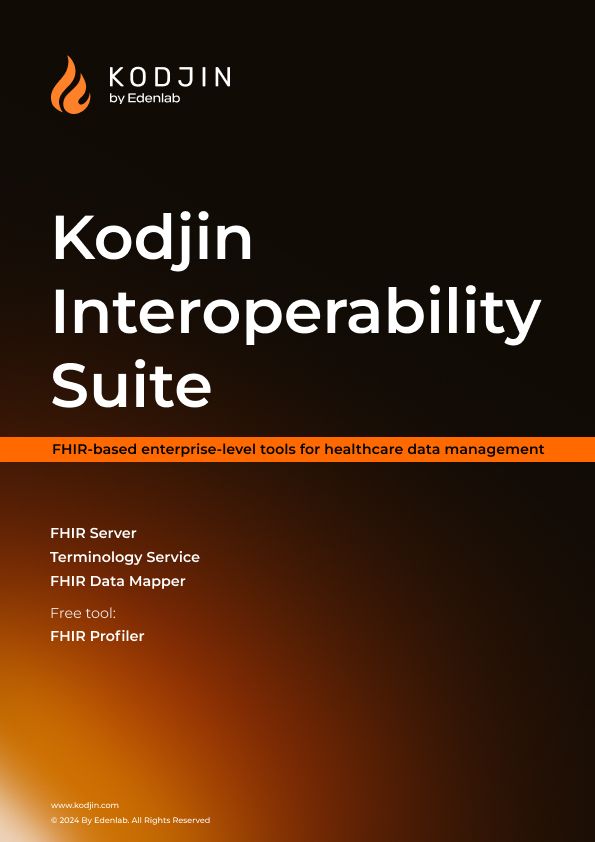Machine learning algorithms can uncover patterns and relationships in data without prior knowledge and detect red flags for potentially dangerous health conditions. For example, by analyzing data from wearable and mobile devices, healthcare professionals can extract valuable insights and create personalized patient care plans. The rising healthcare costs demand a shift towards personalized and value-based care models.

ZS’s Future of Health Survey exposes a significant gap between patients and healthcare providers in assessing the quality of care. In addition, this global survey highlights the importance of experience and value in healthcare interactions across different economies.
The value-based approach to healthcare realigns stakeholders and improves patient outcomes by connecting healthcare to value, focusing on patient outcomes for a sustainable, cost-effective system. In this article, we’ll share several studies demonstrating the effectiveness of machine learning applied to healthcare data towards achieving personalized and value-based healthcare models.
How can machine learning improve personalized healthcare?
For example, AI technology can improve blood glucose control for diabetes patients. For one project, machine learning is being used in diabetes care through patient self-management tools. The system utilizes AI to interpret biometric data, such as blood glucose levels, and alerts patients before hypoglycemic attacks.
The AI predicts these attacks based on continuous glucose monitoring (CGM) data, providing alerts with an accuracy of 98.5% just 30 minutes before hypoglycemia occurs. Patients can then take appropriate actions, such as consuming glucose tablets, to prevent complications.
Understanding Machine Learning in Healthcare
Machine learning (ML) is a type of AI where computers learn and make predictions from data without being directly told what to do. ML involves steps that help computers understand patterns and make accurate guesses, such as obtaining datasets, structuring and validating datasets, creating models, training models, and evaluating and predicting.
- Obtain dataset
Gathering relevant data is the initial step in machine learning. This dataset forms the basis for training the models and can be sourced from databases, APIs, or web scraping. The selection of the dataset depends on the specific domain and the problem being addressed.
- Structure and validate dataset
After obtaining the dataset, it must undergo preprocessing to clean the data, handle missing values, and transform it into a suitable format. Validating the dataset is also essential to ensure its quality and integrity before proceeding.
- Create models
The next step after preparing the dataset is to design machine learning models that detect patterns and relationships in the data. Algorithms such as decision trees support vector machines, or neural networks are used depending on the problem and data characteristics.
- Train model
The models learn from a prepared dataset during training, adjusting their parameters to minimize errors and improve prediction accuracy. This process aims to optimize the models for optimal performance.
- Evaluate and predict
After training the models, it is important to evaluate their performance by testing them on a separate dataset called the test set. This helps determine their accuracy and capability to apply learned patterns to new data. If the models meet the desired criteria during this evaluation, they can be used to make predictions on unseen data.
Use Cases: Applying Machine Learning Algorithms to EHR Data
Machine learning can address various challenges in healthcare, revolutionizing how we approach personalized medicine. Here are some of the tasks ML can effectively tackle:
- Prediction of disease onset or risk assessment: ML algorithms can analyze patient data and provide insights into the chance of developing specific diseases or experiencing certain events.
- Forecasting treatment duration and quality: ML models can analyze historical patient data and treatment outcomes to predict the expected duration and effectiveness of different treatment approaches.
- Clinical Decision Support: ML algorithms can assist healthcare professionals in making informed decisions by:
- Identifying medication contraindications to prevent adverse drug interactions.
- Recommending specific actions or interventions based on service requests.
- Suggesting appropriate appointments for patients based on their medical history.
The potential of ML in personalized healthcare is vast, promising a future where data-driven insights lead to more precise diagnoses and targeted treatments. Let’s examine examples of how ML optimizes the healthcare process.
Personalized Risk Scoring for Critical Care Prognosis Using Mixtures of Gaussian Processes
Introduction:
The study presents a real-time risk-scoring algorithm for critical care patients. The model was trained to use EHR data and compute risk scores based on patients’ physiological data. To accommodate patient diversity, the algorithm identifies latent subtypes using unsupervised learning.
Each subtype corresponds to a Gaussian Process model, which incorporates prior knowledge and offers uncertainty measures in predictions, allowing personalized risk scoring. Knowledge from stable patients is transferred to deteriorating patients through self-taught transfer learning.
Benefits and results:
The proposed algorithm surpasses existing risk scores and machine learning methods. It provides timely alarms for intensive care unit admission, reducing false alarms and enhancing resource management. The algorithm’s personalized risk scores empower healthcare providers to prevent clinical deterioration and improve patient outcomes.
The study reveals valuable insights into patient subtypes and relevant admission information. In addition, the study shows that integrating EHR data and machine learning enables comprehensive risk assessment and tailored interventions. This approach has the potential to optimize critical care management.
Predicting the onset of type 2 diabetes using wide and deep learning with electronic health records
Introduction:
This study highlights the potential of using EHR data and machine learning for predicting the onset of type 2 diabetes and making informed clinical decisions. Researchers conducted a comprehensive analysis of predicting the onset of type 2 diabetes using electronic health records (EHR) and wide and deep learning. It compared the performance of different models and assessed the benefits of using EHR data in conjunction with machine learning.
Benefits and results:
This study utilized a wide and deep learning neural network architecture to predict the onset of diabetes using a publicly available electronic health record (EHR) dataset. The approach showcased the immense potential of combining EHR data with advanced machine learning algorithms in healthcare.
The ensemble model demonstrated remarkable improvements in the area under the curve (AUC) and specificity risk scores, surpassing the performance of other machine learning algorithms tested with the same dataset and experimental settings. Notably, the model significantly enhanced sensitivity, allowing for more accurate predictions of the onset of type 2 diabetes.
What’s the role of machine learning in health care?
Machine learning aims to make predictions, identify patterns, and generate valuable insights to support medical decision-making. The described use cases demonstrate how leveraging EHR data and using advanced machine learning techniques can lead to breakthroughs in healthcare.
Also Read: Role of Virtual Reality in Healthcare
By harnessing the power of these technologies, healthcare professionals can achieve more accurate predictions of disease onset and make significant strides in personalized healthcare. However, several significant challenges cause a barrier to applying machine learning algorithms to healthcare data.
Overcoming Machine Learning Challenges by Ensuring EHR Interoperability
In our article on the importance of EHR interoperability, we shared the advantages of adopting the FHIR standard, such as streamlined workflows and reduced administrative costs. However, it’s worth noting that the interoperability of EHRs plays a significant role in the effectiveness of AI usage in healthcare, including machine learning.
Moreover, machine learning harnesses data-driven insights to maintain value-based healthcare, ultimately enhancing patient care, optimizing resource allocation, improving outcomes, and enabling the cost-effectiveness of healthcare.
AI, particularly machine learning, holds immense potential for problem-solving, but unlocking its full power requires addressing challenges and grasping the core steps in the process. Overcoming these barriers enables healthcare professionals to harness data for valuable insights and meaningful progress.
1. Limited data accessibility: One of the most significant challenges in healthcare AI is the limited accessibility of comprehensive and diverse datasets. Interoperability is crucial in overcoming this challenge by enabling seamless data exchange across different healthcare systems, institutions, and platforms.
By adopting interoperability standards like OMOP on FHIR, healthcare providers and researchers can access a broader range of data, allowing for more robust AI models and accurate predictions.
2. Data quality and accuracy issues: FHIR Profiles provide a mechanism for data validation and ensure adherence to predefined standards. FHIR Profiles define the structure and content requirements for specific types of health data, enabling organizations to improve their data quality and consistency.
By implementing FHIR profiles, healthcare stakeholders can enhance data accuracy, leading to more effective use of AI technologies in healthcare. Moreover, the comprehensive cost-free Kodjin FHIR Profiler automates and expedites the development of FHIR profiles.
3. Regulatory and ethical concerns: The use of AI in healthcare raises important regulatory and ethical considerations. The FHIR standard can help address these concerns by enabling the exchange of health data in a way that does not conflict with the requirements of major healthcare data privacy regulations.
For example, by using the Kodjin FHIR Server, stakeholders can rest assured in compliance with such regulations as HIPAA and ONC’s Final Rule. Adhering to FHIR standards allows for navigating regulatory requirements and maintaining ethical practices while leveraging AI technologies.
4. Variability in the terminologies used across different healthcare systems: Clinical terminologies diversity causes inconsistency that can create difficulties in accurately interpreting and integrating EHR data for machine learning applications.
Thankfully, there are tools such as the Kodjin Terminology Service, which manages multiple terminology systems in a FHIR way by providing a comprehensive set of tools for finding, validating, and mapping codes in real-time.
5. Difficulties in accurately interpreting and integrating EHR data for machine learning applications: FHIR provides a structured and interoperable format for representing clinical information, making extracting and processing data for machine learning algorithms easier. In the debate of HL7 vs FHIR, it is clear that FHIR offers a more modern approach to data interoperability. After mapping healthcare data from proprietary data standards or HL7 v2 into FHIR with the Kodjin FHIR Data Mapper, machine learning models can access comprehensive and consistent FHIR data from various healthcare systems, leading to more accurate predictions and improved insights.
6. Access to AI for patients and healthcare professionals: Besides scientists and analysts, accessing AI capabilities in healthcare can be challenging. Adopting FHIR promotes inclusivity by providing a comprehensive human-readable FHIR data model and FHIR RESTful APIs. FHIR empowers patients and healthcare professionals to access AI-driven tools and applications seamlessly.
By making AI technologies more accessible, patients can benefit from personalized insights and recommendations, while healthcare professionals can leverage AI support to enhance decision-making and improve patient care.
How do you get out-of-the-box EHR interoperability?
Partner with Edenlab to achieve EHR interoperability and harness the power of machine learning in personalized medicine. Our team of experts understands the intricacies of healthcare data. We work closely with healthcare organizations to design customized solutions tailored to their specific needs while keeping abreast of the ever-changing healthcare laws and regulations.
Edenlab provides advanced data management capabilities, allowing a seamless extraction, transformation, and loading (ETL) process in healthcare making EHR data suitable for machine learning applications. We will ensure data integrity, privacy, and security of healthcare data for your project. Join us in driving innovation, improving patient outcomes, and revolutionizing the future of healthcare in the FHIR paradigm.






